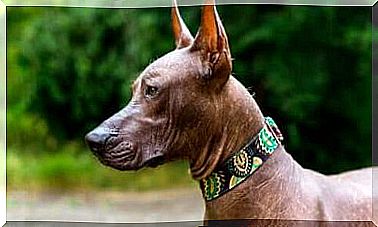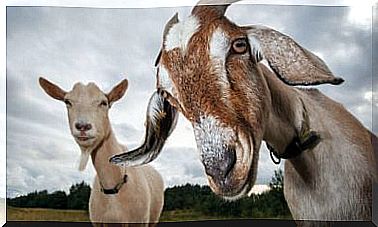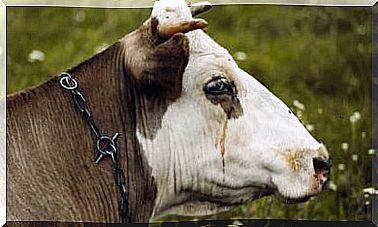The Magpie: Characteristics, Behavior And Trivia
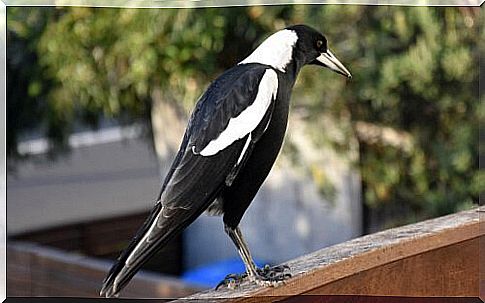
The magpie is one of the smartest birds around. They inhabit Europe, Asia, North America and Africa, and adapt to any ecosystem without any difficulties.
These birds can settle in fields, cities or cultivated land. Also in hedges, trees, rural woods, parks or gardens, in areas with scarce or abundant vegetation.
Its scientific name is Pica pica . They are also called long-tailed catches. For a long time they were threatened, as they were classified as harmful to crops.
The number of these birds has been growing in recent years, especially thanks to their enormous capacity to survive in the face of increasing human concentrations.
General characteristics of the magpie
One of the characteristics of this species is its black and white plumage, accompanied by blue, purple or green brushstrokes on the wings.
Its size varies between 40 and 51 centimeters, of which about half correspond to the tail. Its wingspan varies between 50 and 62 centimeters, with a weight that is around 200 grams.
With small eyes and a long, straight and quite strong beak, the magpie has a nervous behavior and emits quick warning signals in case of any eventuality.
His singing is not one of the prettiest in the animal kingdom and is often described as a kind of audible alarm. Its average life is 15 years.
This curious bird is widely spread throughout Europe, being the most common bird in Spanish territory. Watching them in freedom is relatively easy, as they don’t usually fly very high.
Omnivorous in nature, its menu includes a varied number of foods. They eat smaller birds, eggs, fruits, snails, rodents, small reptiles and insects such as spiders, for example. During the winter, they can become scavengers and scavenge for food in the garbage.
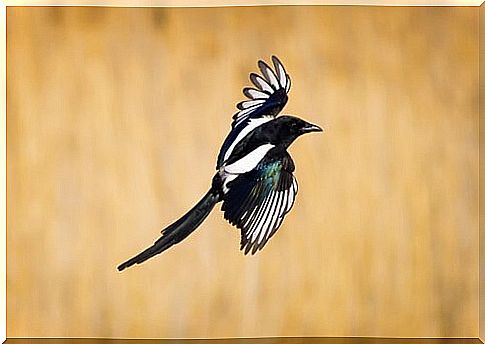
reproductive period
The magpie is the type of bird that has a single partner for life.
They build their nests in the thickest branches of trees, especially in the crowns, though they also sometimes select shrubs no more than three feet tall. It is also not strange that they are installed in urban buildings.
The mating season for magpies is during the spring, so they begin to build the nest in March; are constructions characterized by their spherical shape with a side entrance. The deepest wall is clay, with a thickness of approximately four centimeters. They protect the upper part with a dome of branches.
The magpie reproduces only once a year, laying four to seven greenish eggs, hatched exclusively by the female.
Magpie incubation lasts from 17 to 20 days, a period in which the couple maintains a discreet and silent behavior. Once out of the shell, the chicks are fed by their parents for a month, until they learn to fly.
magpie behavior
Astute: this is one of the most used adjectives to define this species. They maintain effective communication, which allows them to act in a synchronized way to defend against attack by larger birds. In addition, they are also able to organize themselves to drive out terrestrial predators.
When they find the corpse of a large animal, they emit shrill cries in order to attract the attention of vultures and crows. This is because, in order for them to feed on the ‘prey’ found, they need these other birds to break their skin before they can eat.
The way in which the magpie takes precautions and stores excess food attracts attention. For this purpose, they use unsuspected sites for other species, so their reserves are rarely threatened.
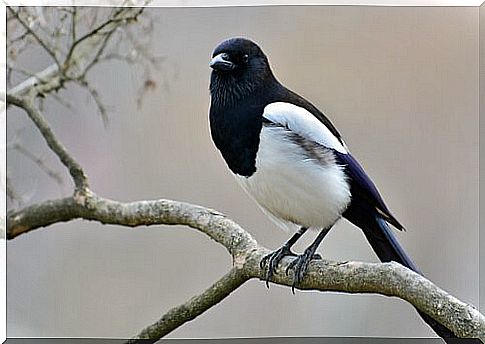
Curiosities
The magpie tends to have a peculiar predilection for shiny objects. Jewels of great value have been found in their nests, as well as tins or mirrors. Magpies, like primates, elephants and dolphins, are able to recognize their own reflection.
Another ability of this kind is to identify and separate people into ‘acquaintances’ and ‘strangers’. Sometimes, they can assume some humans as members of their pack, going to the extreme of defending them with their own lives.
Furthermore, if they are taught from a young age, they can imitate the human voice with the same skill as parrots. After black cats and crows, it is one of the animals that most arouses superstition within popular culture.

